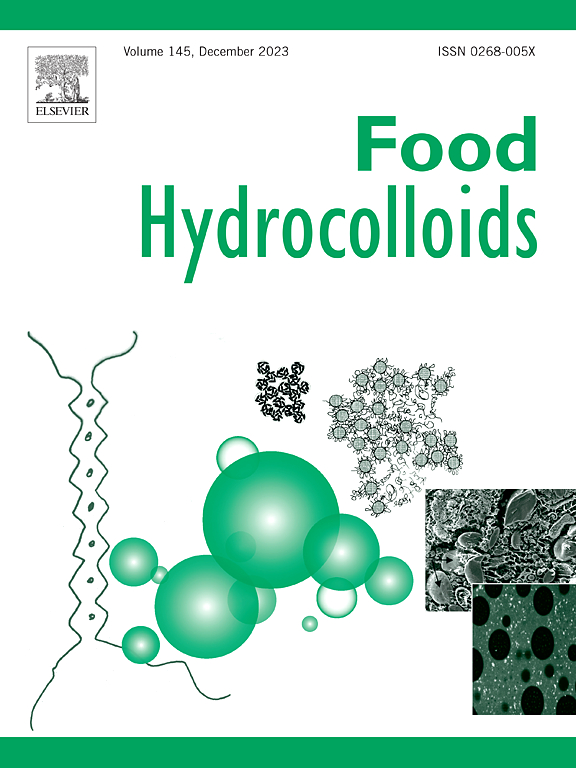Heat-induced aggregation and gelation of rapeseed proteins
IF 11
1区 农林科学
Q1 CHEMISTRY, APPLIED
引用次数: 0
Abstract
Heat-induced aggregation and gelation of rapeseed protein isolate (RPI) solutions and their principal protein components napin and cruciferin was investigated as a function of the pH, temperature, protein concentration and ionic strength. Confocal laser scanning microscopy (CSLM) showed that during heating RPI and purified cruciferin form microgels that subsequently aggregate and can form a gel if their concentration is sufficiently large. Purified napin by itself does not gel when heated, but was found to reinforce gels formed by cruciferin. Dynamic mechanical measurements showed that the gelation rate increased strongly with increasing temperature and was controlled by an activation energy of about 300 kJ/mol. The elastic shear modulus of RPI and cruciferin gels increased with increasing protein concentration. The elastic modulus of RPI gels increased with increasing pH between pH 4 and 7, but did not depend much on the pH between pH 7 and 10, nor on the addition of 0.1 M NaCl. However, for purified cruciferin the gels had a larger modulus close to pH 10 and in the presence of NaCl. During cooling the modulus further increased. The yield strain of the gels was found to be approximately 100 % almost independent of the pH and the concentration.

求助全文
约1分钟内获得全文
求助全文
来源期刊

Food Hydrocolloids
工程技术-食品科技
CiteScore
19.90
自引率
14.00%
发文量
871
审稿时长
37 days
期刊介绍:
Food Hydrocolloids publishes original and innovative research focused on the characterization, functional properties, and applications of hydrocolloid materials used in food products. These hydrocolloids, defined as polysaccharides and proteins of commercial importance, are added to control aspects such as texture, stability, rheology, and sensory properties. The research's primary emphasis should be on the hydrocolloids themselves, with thorough descriptions of their source, nature, and physicochemical characteristics. Manuscripts are expected to clearly outline specific aims and objectives, include a fundamental discussion of research findings at the molecular level, and address the significance of the results. Studies on hydrocolloids in complex formulations should concentrate on their overall properties and mechanisms of action, while simple formulation development studies may not be considered for publication.
The main areas of interest are:
-Chemical and physicochemical characterisation
Thermal properties including glass transitions and conformational changes-
Rheological properties including viscosity, viscoelastic properties and gelation behaviour-
The influence on organoleptic properties-
Interfacial properties including stabilisation of dispersions, emulsions and foams-
Film forming properties with application to edible films and active packaging-
Encapsulation and controlled release of active compounds-
The influence on health including their role as dietary fibre-
Manipulation of hydrocolloid structure and functionality through chemical, biochemical and physical processes-
New hydrocolloids and hydrocolloid sources of commercial potential.
The Journal also publishes Review articles that provide an overview of the latest developments in topics of specific interest to researchers in this field of activity.
 求助内容:
求助内容: 应助结果提醒方式:
应助结果提醒方式:


